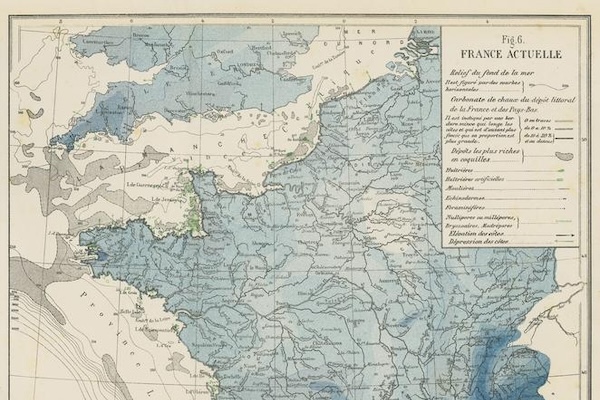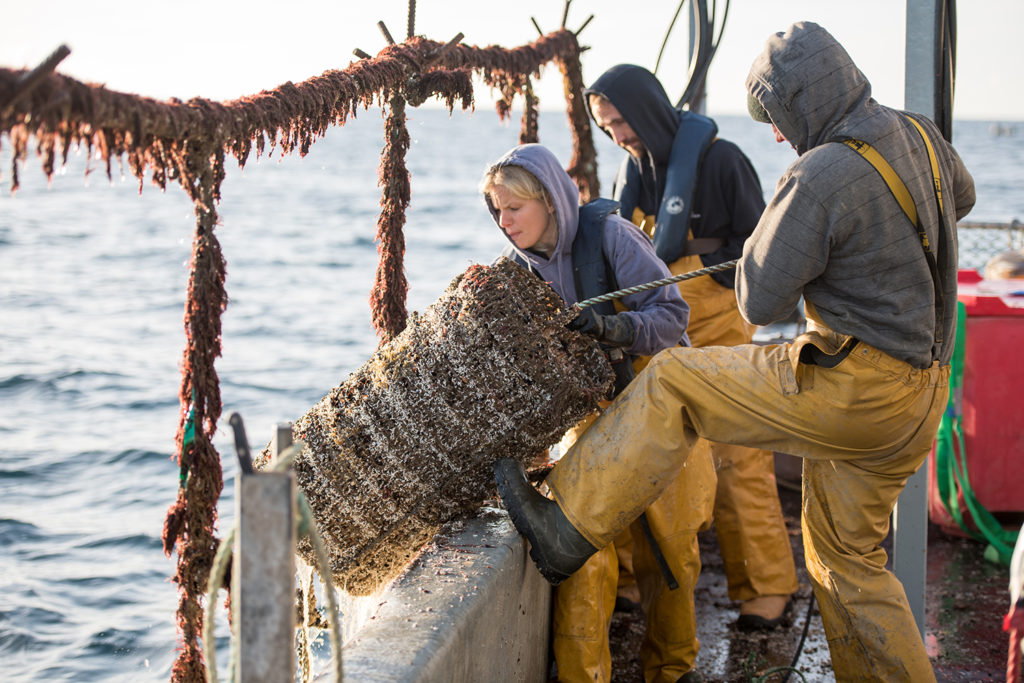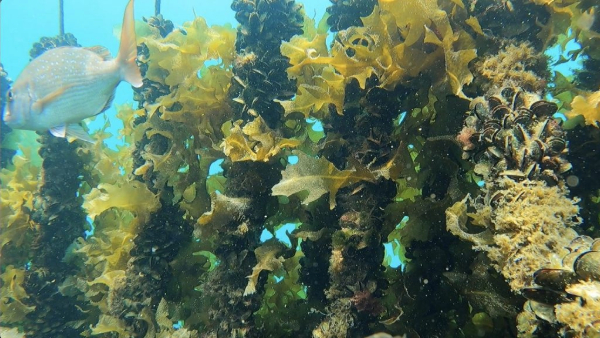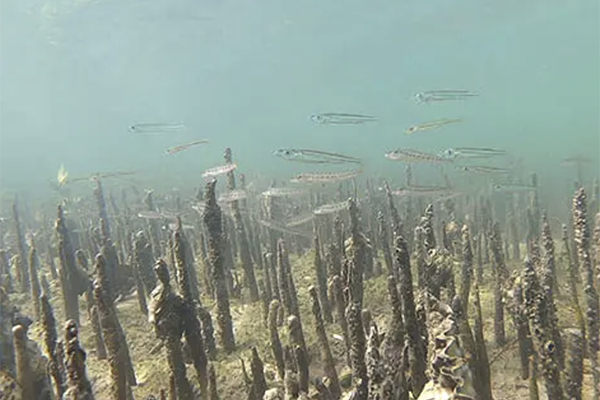Research links offshore mussel farm in Lyme Bay to revival of shellfish reefs, improving habitats for commercial fishing

The UK’s first large-scale offshore mussel farm is allowing shellfish reefs to return to parts of the seabed off England’s south coast for the first time in up to 150 years, a new study has revealed.
Researchers have spent the past decade examining the environmental impact of the farm, which was first established in Lyme Bay off the coast of South Devon in 2013. In that time, the seabed beneath the farm’s ropes has started to transform as mussels from the lines are deposited on the seabed below. It’s changed from muddy sediment with limited biodiversity into reefs. Research shows these reefs have the potential to benefit many commercial fish and crustacean species and the ecosystem more generally.
“When we first started to monitor the mussel farm in 2013, we hoped to find evidence of its potential to restore the health of the seabed,” said Dr. Emma Sheehan, associate professor in marine conservation and senior author of the study. “That is something we have shown consistently, with new species of marine flora and fauna regularly being seen within its ropes and on the seabed.”
However, a historic map – recently uncovered by a Devon-based artist – has revealed this might in fact be a form of restoration rather than creating habitats never seen in the area before. Dating from 1871, the French map labels a large seabed area from Torquay to Lyme Regis as “rich shell beds.” Scientists believe these were likely oyster or mussel reefs, now destroyed by bottom-towed fishing gear in the 20th century.
With such practices banned following the designation of the Lyme Bay Marine Protected Area (MPA) – and the mussel farm’s three sites located above the old shell beds – it’s allowing the region to become home to shellfish reefs once more.
“To find out that such habitats were found in the region 150 years ago is really exciting,” said Sheehan. “It shows that the farm is not only having a positive impact on the health of the ocean now, but also returning the seabed to some semblance of its former state.”
The great mussel debate: What’s wild, what’s farmed and what certification scheme fits the bill?
The study, published in Science of the Total Environment, also highlights how the shellfish reefs that have been recreated over the past decade are being used by a number of commercially important species.
Using a combination of acoustic tags and underwater monitoring equipment, scientists found that individual European lobsters (Homarus gammarus) remained beneath the farm for up to 283 days using both the farm anchors – and areas of seabed dominated by fallen mussels – for feeding and refuge.
By contrast, brown crabs (Cancer pagurus) showed little willingness to stay within the farm’s infrastructure and all tagged crabs had left the area of the farm under surveillance within nine days.
This, scientists say, could be evidence that the mussel farm is providing refuge and similar feeding opportunities for lobster and crab as their typical habitat on rocky reefs.
“These findings show that an area of flat, muddy and degraded seabed can be restored into a productive, biodiverse habitat,” said John Holmyard, managing director at Offshore Shellfish Ltd, which manages the Lyme Bay mussel farm. “Through the location of a carefully designed offshore mussel farm, we are creating an effect comparable to that seen from the statutory protection of a rocky reef area. It is enabling lobsters and crabs to feed and grow within the protection of the farmed area before they move out and provide further benefits to surrounding fisheries.”
Holmyard will be speaking at this year’s Responsible Seafood Summit in St Andrews, Scotland. Register here today.
Now that you've reached the end of the article ...
… please consider supporting GSA’s mission to advance responsible seafood practices through education, advocacy and third-party assurances. The Advocate aims to document the evolution of responsible seafood practices and share the expansive knowledge of our vast network of contributors.
By becoming a Global Seafood Alliance member, you’re ensuring that all of the pre-competitive work we do through member benefits, resources and events can continue. Individual membership costs just $50 a year.
Not a GSA member? Join us.
Author
Tagged With
Related Posts

Intelligence
Scientists use lobster tags to study how offshore aquaculture restores marine habitats
The Ropes to Reefs project uses lobster tagging to assess the wider benefits of the UK’s first large-scale offshore mussel farm.

Innovation & Investment
UK lobster-farming project breaks new ground
A project to grow lobsters in the open sea is giving researchers hope that the technology behind stock enhancement could be improved and that lobster farming could provide new prospects for diversification and employment.

Responsibility
Study: Mussel and seaweed farming can boost wild fish populations
Study shows mussel and seaweed farming can increase fish populations and biodiversity, showing potential environmental and economic benefits.

Responsibility
Shellfish reefs improve marine biodiversity in South Australia
Benefits of more shellfish include improved water quality from filter-feeding and providing habitat and nursery grounds for marine species.



